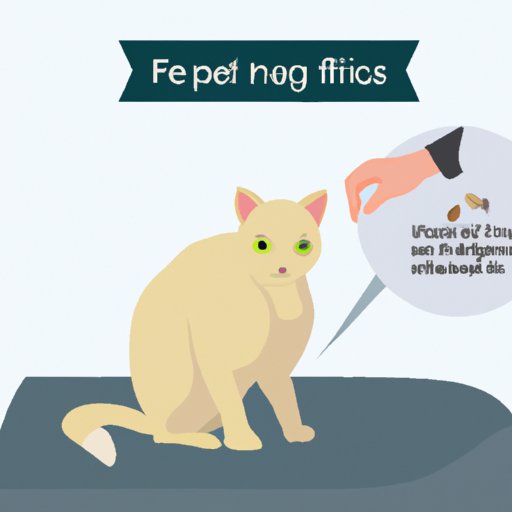
I. Introduction
As a cat owner, one of the biggest concerns is the possibility of flea infestations in your feline companion. Not only can fleas be uncomfortable for your cat, but they can also lead to more serious health issues if left untreated. In this article, we will go over the symptoms of flea infestation in cats, ways to detect fleas, natural remedies for flea prevention and treatment, the benefits of consulting with a veterinarian, and preventative measures to keep your cat flea-free.
II. Symptoms of Flea Infestation in Cats
There are a few symptoms that can indicate your cat has fleas. The most common symptoms include:
- Excessive scratching, licking, or biting certain areas of your cat’s body
- Red bumps or welts on your cat’s skin, especially around the neck, tail, and ears
- Irritation or scabs on your cat’s skin
- Flea dirt (small black specks) on your cat’s fur
III. Using a Flea Comb to Detect Fleas
One of the easiest ways to detect fleas on your cat is by using a flea comb. This is a specialized comb that is designed to trap and remove fleas. Follow these steps to use a flea comb:
- Place your cat on a stable surface, such as a table or counter
- Start combing your cat’s fur from the top of their head, working your way down to the tail
- Whenever you find a flea, remove it from the comb and dispose of it
- Repeat this process until you have combed your cat’s entire body
Remember to clean the flea comb after use by dipping it in a mixture of water and dish soap.
IV. Natural Remedies for Flea Prevention/Treatment
Many cat owners prefer natural remedies for flea prevention and treatment over chemical-based products, which can have harmful side effects. Here are a few natural remedies you can use:
- Essential oils, such as tea tree and lavender, can be diluted and applied to your cat’s skin as a flea repellent
- Herbs, like chamomile and rosemary, can be used to make flea-repelling sprays that you can apply to your cat’s fur
- Natural flea collars made with essential oils can also help repel fleas
It’s important to note that natural remedies may not be as effective as chemical-based products. Additionally, some essential oils can be toxic to cats if not diluted correctly, so do your research and consult with a veterinarian before using any natural flea remedies.
V. Consultation with a Veterinarian
If you suspect your cat has fleas, it’s best to consult with a veterinarian. They can help determine the severity of the infestation and recommend the best course of treatment. It’s also important to be aware of the following symptoms, which indicate your cat may need professional care:
- Excessive scratching that leads to hair loss or skin damage
- Lethargy or loss of appetite
- Presence of tapeworms, which are commonly transmitted through fleas
- Allergic reactions to flea bites, which can cause severe itching and discomfort
VI. Preventative Measures to Protect Your Cat from Fleas
The best way to protect your cat from fleas is by taking preventative measures. Here are a few tips:
- Use flea prevention products, such as spot-on treatments, flea collars, or monthly tablets
- Keep your cat’s environment clean by regularly vacuuming and washing bedding
- Avoid contact with other animals that may have fleas, especially outdoor cats and strays
VII. Conclusion
Flea infestations can be a source of discomfort for your cat and lead to more serious health issues if left untreated. By being aware of the symptoms and taking preventative measures, you can ensure that your cat stays flea-free. If you suspect your cat has fleas or notice any symptoms, consult with a veterinarian for professional care and guidance.





